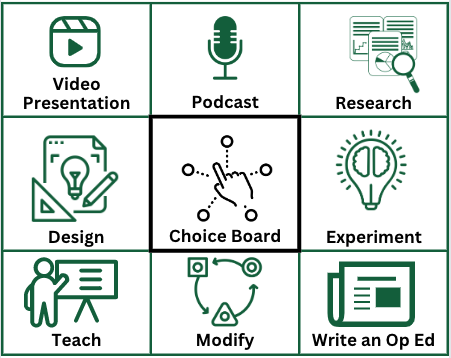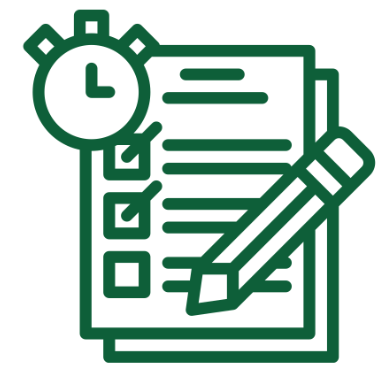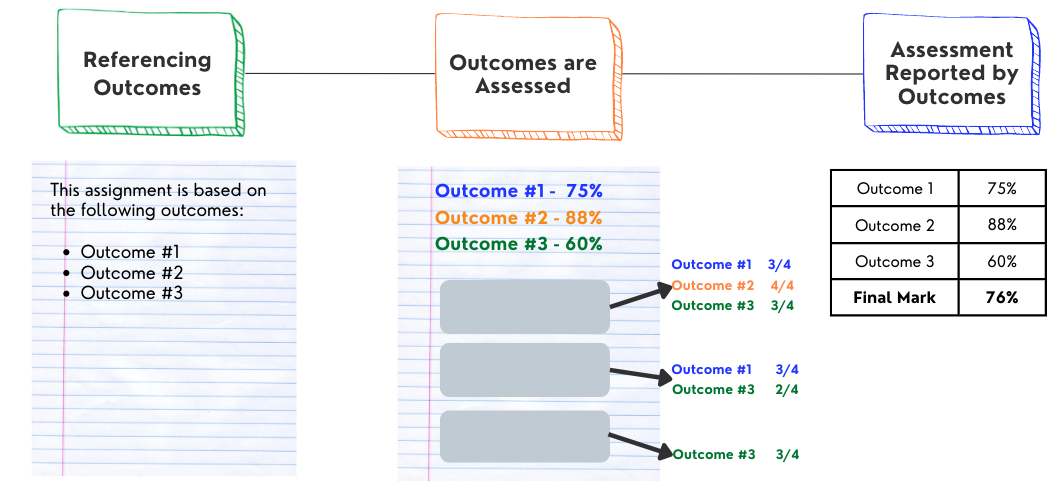Assessment and Evaluation
- Assessment and Evaluation, Curriculum Development, Inclusivity, Instructional / Course Design, Uncategorized, Wellness
Maximizing Learning Potential with Student Wellness
Your Brain on Teaching and Learning: Series 2 Are your students showing signs of anxiety? Are your students experiencing a sense of purpose and engagement in the classroom? ______________________________________________________________________________________________ The impact of teaching and learning practices on student wellness cannot be overstated ______________________________________________________________________________________________ By integrating insights from brain science, we can create powerful learning environments that prioritize student wellness. Let’s explore three ways to associate your teaching practices with student wellbeing: Alignment for Clarity: Alignment refers to the process of strategically planning your learning outcomes to clearly define what your students will be able to do, know, or value. Then, intentionally plan how you will assess and teach based on…
-
New Quizzes – Adding Accommodations
Summary: If you need to provide students with quiz accommodations, it is important to know that adding accommodations in New Quizzes looks quite different than Classic Quizzes. Date published: June 19, 2023 Options for accommodations in New Quizzes include: Time adjustments for all quizzes in the course (Accommodations and Edit Pencil) Add extra time for a student Remove time limits Multiply time limits using a ‘Time limit multiplier’ Attempts and additional time for a single quiz and student (Moderate Button) Manually unlock quiz attempts Add extra attempts for a quiz Add additional time for timed quiz attempts Remove time limits Where do I set accommodations? Once a quiz…
-
Make your “ChatGPT” and other GenAI expectations clear
Links and terminology were updated October 2023 Students want to know what your expectations are. Sometimes students feel uncertain about what to ask or how to ask. Students learn quickly that different instructors, in different programs, handle and regard some things differently when it comes to rules for academic integrity. The reasons for this can relate to discipline, to learning outcomes, to assessment type, and to the philosophy of the educator. The syllabus and any information posted alongside assessment details are excellent “placements” of clear expectations. Here are some pointers and resources: A link to the USask syllabus information suggested language related to permitted or unpermitted use of…
-
10 Guidelines for Assessment Practice in a GenAI Environment
This post was updated for links and terminology in October 2023. Generative artificial intelligence (GenAI) tools, such as but not limited to ChatGPT, are increasingly available with quickly advancing capabilities. Proper and ethical use is important for transparent and valid assessment. The following are 10 general guidelines for educators. To prepare Learn about relevant, new GenAI technologies and their applications in contexts of interest. Discuss approaches and emerging practices with disciplinary colleagues. Design assessment to meet course learning outcomes in ways that include acceptable uses of GenAI tools and/or reduces the likelihood of unacceptable uses. During the course Explain how students should and should not complete their assessments and…
-
Indigenization and Assessment – Rethinking Traditional Practice
“Education got us into this mess, education will get us out of it.” – Honourable Justice Murray Sinclair, Chair of the Truth and Reconciliation Commission, December 2015 Higher education is embarking on a journey of Indigenization, decolonization and reconciliation (IDR). Location will impact understanding of how to accomplish IDR and who will be involved in actualizing the initiative. One thing will be consistent, how we define assessment. Merriam-Webster’s definition is “the action or an instance of making a judgment about something.” This definition highlights the challenge when educators work to Indigenize assessment actions that may be subjective. In a world where people of First Nation, Inuit, and Métis identities face bias…
-
Comparing two online quizzes: Formative Assessment
This post aims to compare the design of two online quizzes to determine how each design impacts student learning. Formative assessment is a process used to: Identify what students already know and where they need more support to reach the desired learning outcomes. Provide feedback that the student can use to increase learning before a final assessment. For example, using feedback from a draft assignment that can be used to increase understanding for future revisions. Evaluate the effectiveness of the instruction during the learning process so the teacher can adjust instruction to meet students’ needs. “You almost want kids to make mistakes on formative assessments because that’s how you figure out…
-
USask Assessment Principles
In the 2022-23, USask adopted an updated set of principles about how we try to assess students. Here are some tips about using each of the principles in your course. Each principle is defined and related posts are listed. Is aligned with learning outcomes and instructional strategies (assessment of learning). Alignment refers to the process of planning your learning outcomes to describe what your students will be able to do, know or value, and then planning how you will assess and teach based on those outcomes. When align to outcomes, you only gather evidence of academic achievement that is critical to those outcomes. Watch this video what “aligned” means Understand…
-
Student Voice and Choice: Co-Creating Choice Boards
Summary: Co-creating a list of potential assessments with students is a great opportunity to increase student voice and choice. Students who choose assessments that are personally relevant are more likely to be motivated, engaged, and take ownership of their learning. Giving students a choice and voice in assessments allows them to demonstrate their understanding of the material in ways that are meaningful to them. Date of publishing: February 23, 2023 Choice Boards A choice board is a is a grid or chart that provides students with a set of options to meet learning outcomes. Choice boards can be used in many ways, depending on the goals and outcomes in the course.…
-
Assessing student participation and attendance
While everyone agrees a grade is designed to represent what a student has learned, some educators also think grades should be used to motivate students. When our students seemed less inclined to attend or participate during and after the pandemic, we turned to something the grading literature does not support – giving a grade for being in class. Here’s a quick summary of what the research says on the subject of giving grades for participating (i.e., the 1-mark quiz) or attending: You might think What research says What experts recommend Giving a small grade for attendance motivates students to come to class You should include academic achievements, not behaviour, in…
-
An Outcomes-Based Practice Continuum
This article will discuss a continuum of outcomes-based practices including referencing outcomes, assessing outcomes, and reporting student achievement on outcomes. Referencing Outcomes Referencing outcomes is a beginning outcomes-based practice. Outcomes are referenced within each assignment, often with the instruction section. Here, the instructor has created the assignment with the outcomes in mind and makes this visible. However, outcomes are not assessed separately, and assignments are given a ‘blanket score’ for multiple learning outcomes. Gradebook reporting is done by assignment. Assessing Outcomes within Assignments The next stage occurs when the outcomes within assignments are assessed. This stage provides valuable insight to determine the most important areas for improvement. Instructors create valid tools,…



